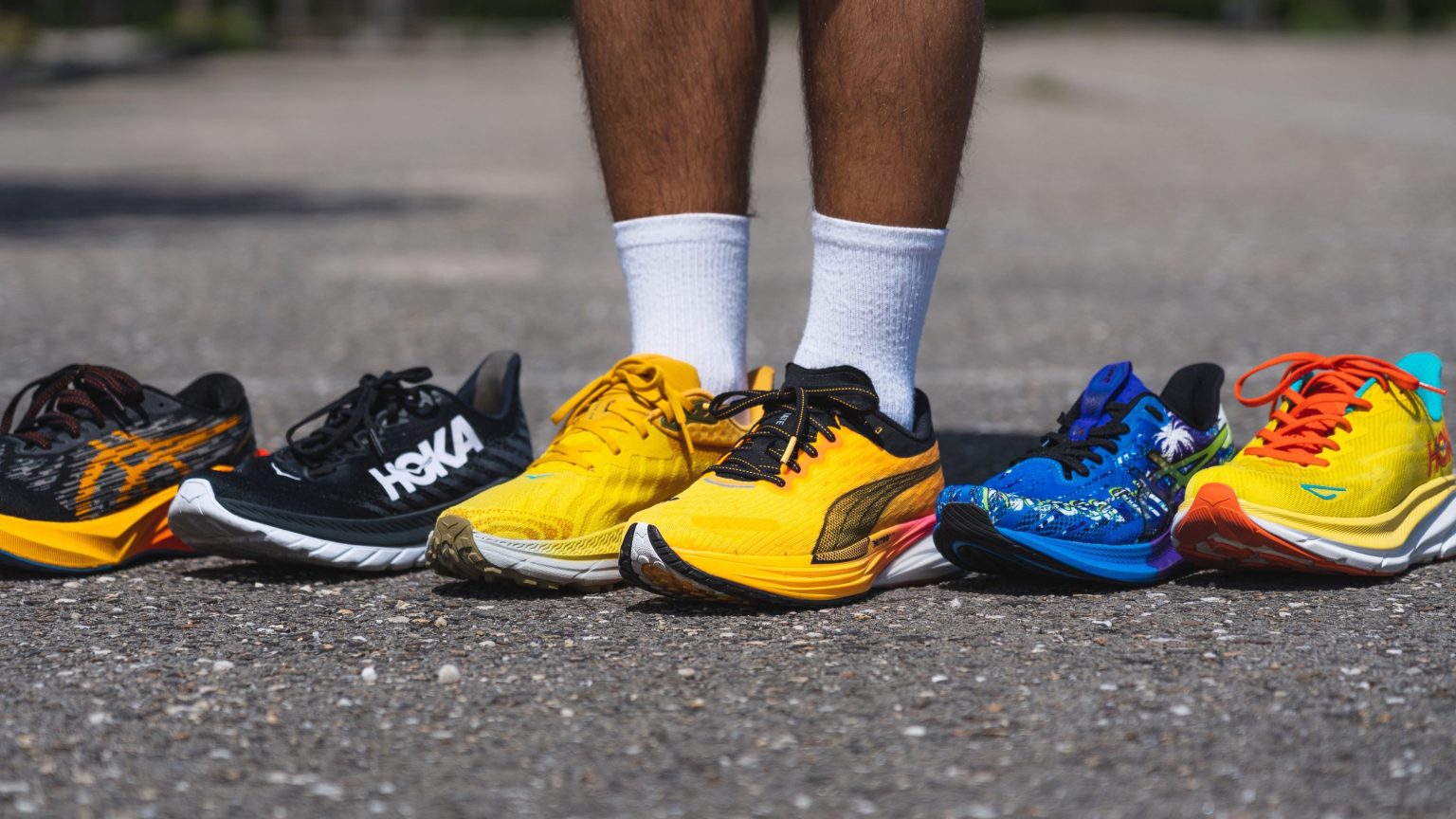Can a comprehensive sneaker guide really cover everything from Olympic-grade performance shoes to luxury designer collaborations without getting overwhelming? Mike here, and after 10+ years of testing over 500 different sneaker models across every category imaginable – from Madison Square Garden pickup games to Yosemite trail sections – I’m confident this is the most complete sneaker encyclopedia you’ll find anywhere. Whether you’re a first-time buyer or a seasoned sneakerhead, this guide covers all 17 major sneaker types, materials science, buying strategies, and insider knowledge that most people never learn.
The Sneaker Revolution: How Rubber Soles Changed Everything
Let me tell you something fascinating – the word “sneaker” literally comes from the fact that you could “sneak up” on people because the rubber soles were so much quieter than hard leather dress shoes. The term was first used way back in 1887 by the Boston Journal, referring to “the name boys give to tennis shoes.”
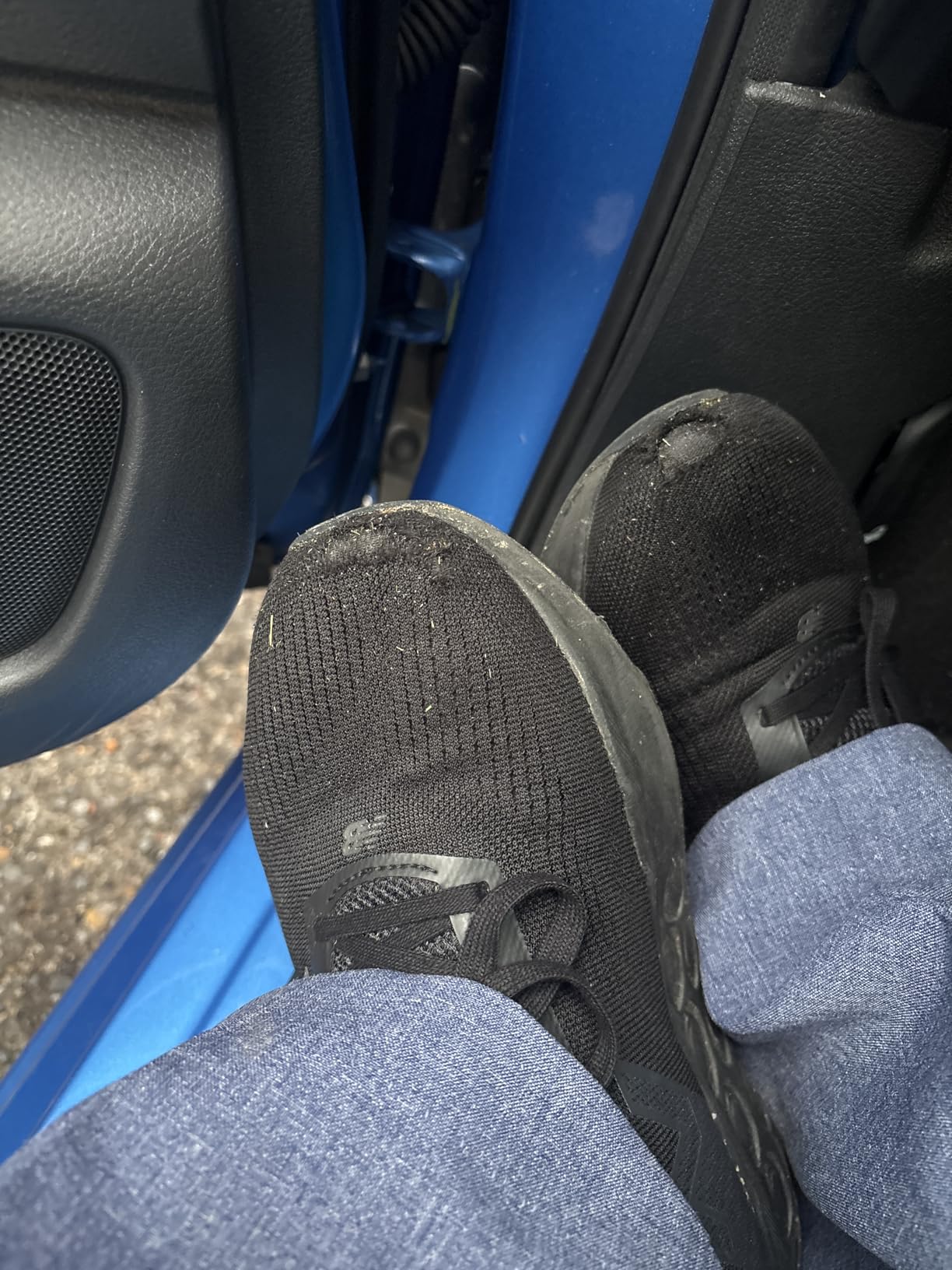
But here’s what most people don’t know: sneakers actually started with British Navy seamen in the 19th century who wore rubber-soled shoes to prevent slipping on wet, moving ship decks. The British aristocracy then adopted them for tennis because of their excellent traction. Talk about a journey from sea to court to street!
The Athletic Revolution
The real game-changer came in 1895 when British company J.W. Foster and Sons designed the first shoes specifically for running – complete with spikes for traction. These same shoes helped Harold Abrahams and Eric Liddell win gold at the 1924 Olympics. I get goosebumps thinking about how those early innovations led to the incredible technology I test today.
Adolf “Adi” Dassler started crafting sports shoes in his mother’s kitchen after World War I, eventually founding Adidas. By the 1950s, athletic shoes weren’t just for athletics anymore – they became part of youth culture as school dress codes relaxed. The 1990s marked the fashion revolution, when sneakers transformed from athletic aids to identity statements.
Today’s Billion-Dollar Industry
The numbers are mind-blowing: the US sneaker market is projected to hit over $100 billion, with the resale market expected to reach $30 billion by 2030. From 1970’s five models to 2012’s 3,371 different sport shoe models in the US alone – that’s exponential growth I’ve witnessed firsthand during my reviewing career.
The Complete Sneaker Categories: 17 Essential Types You Need to Know
ATHLETIC PERFORMANCE SNEAKERS
1. Road Running Shoes
During my marathon training sessions, I’ve learned that road runners are all about impact absorption. These shoes are engineered for repetitive heel-to-toe motion on hard surfaces. Key features I always test for:
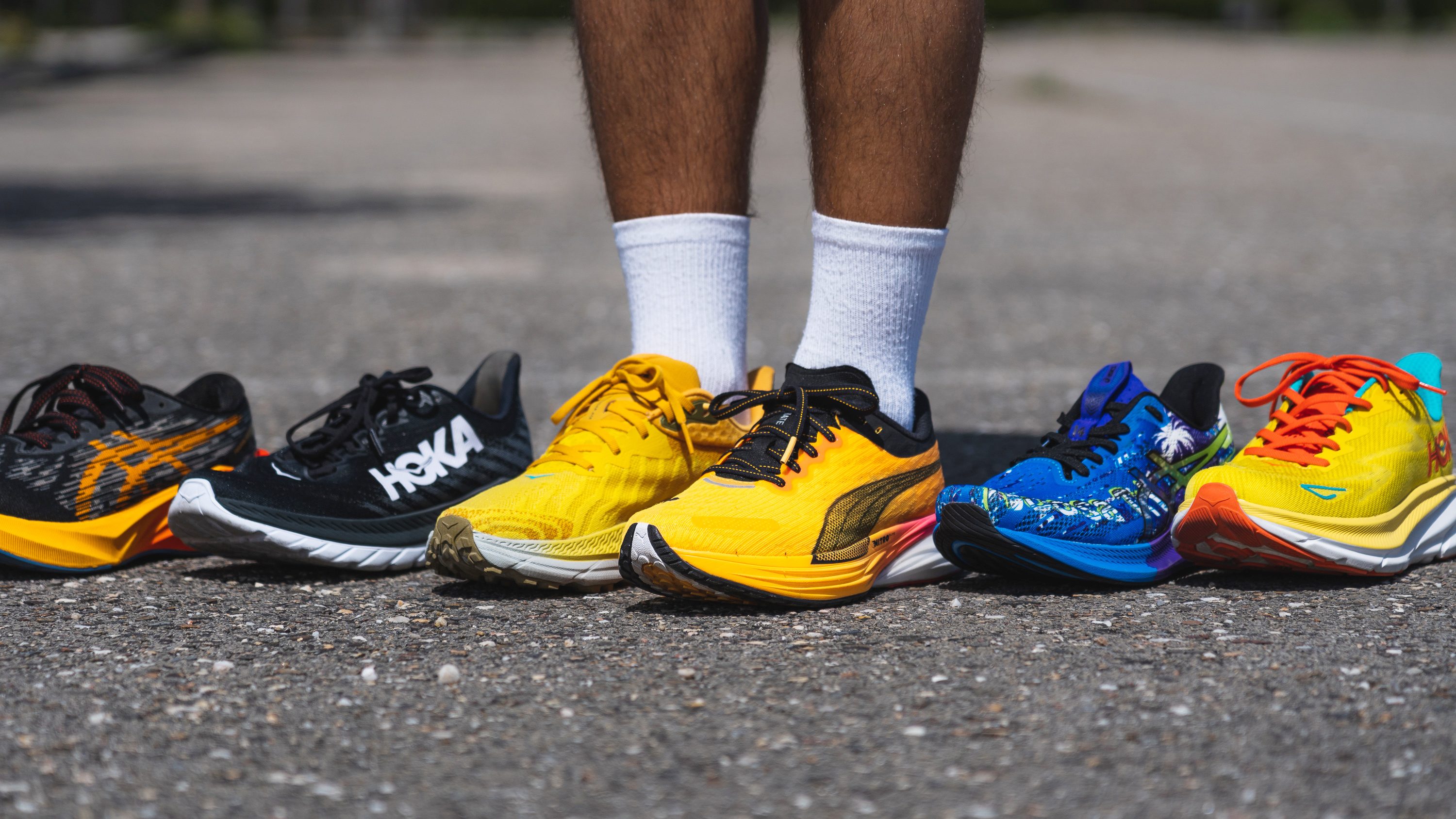
- Cushioning systems: EVA foam, gel, or advanced materials like Nike’s ZoomX
- Heel-to-toe drop: Typically 8-12mm for traditional runners
- Breathable uppers: Mesh construction for moisture management
- Durability: Outsole compounds that can handle 300-500 miles
I’ve tested everything from the Nike Air Zoom Pegasus to the Brooks Ghost series. For beginners, I always recommend starting with a neutral shoe like the New Balance Fresh Foam series – they’re forgiving and versatile.
2. Trail Running Shoes
Trail running is where sneakers get seriously technical. After testing dozens of models on everything from Rocky Mountain switchbacks to muddy Pacific Northwest trails, here’s what separates trail runners from road shoes:
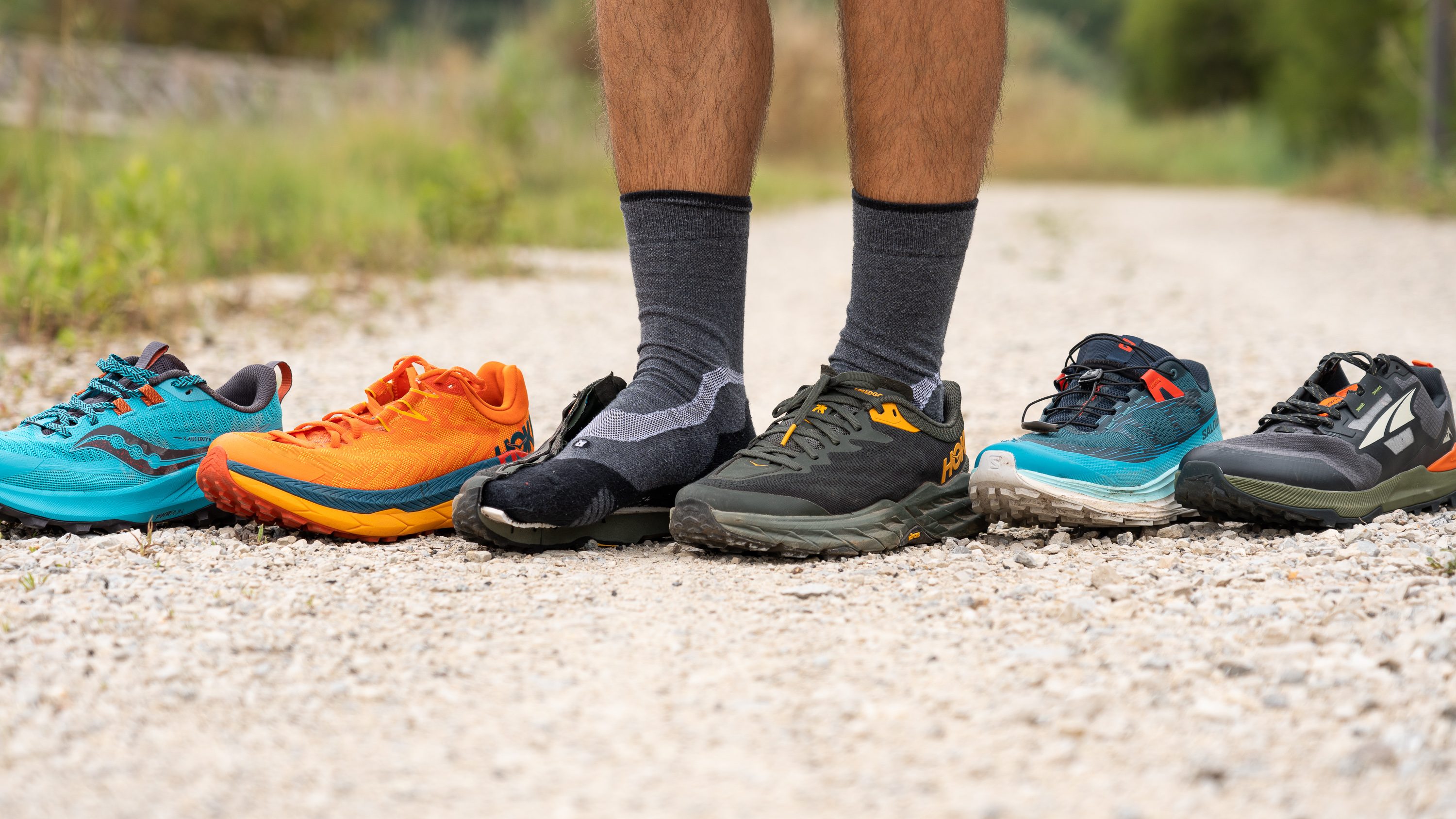
- Aggressive lugs: 4-6mm deep for grip on loose surfaces
- Rock plates: Protection from sharp objects underfoot
- Reinforced uppers: Abrasion resistance from brush and rocks
- Quick-drying materials: For creek crossings and wet conditions
Brands like Salomon XT-6 have become fashion icons (hello, creative directors!), but don’t overlook their serious trail credentials.
3. Walking Shoes
Often overlooked but incredibly important for daily comfort. Walking shoes prioritize:
:max_bytes(150000):strip_icc()/when-should-i-replace-my-walking-shoes-3436325-0801-7a1840d83573471092e0380f9e230ecc.jpg)
- Arch support: Prevents fatigue during extended wear
- Heel cushioning: Absorbs impact from heel-strike walking pattern
- Breathability: All-day comfort without overheating
- Lightweight construction: Reduces leg fatigue
New Balance dominates this category with models like the 608v5 – not the sexiest shoe, but your feet will thank you after 12-hour days.
4. Hiking Shoes
After testing hiking shoes from day hikes to multi-day backpacking trips, I’ve learned they’re basically trail runners’ beefier cousins:
- Ankle support: Higher collar for stability on uneven terrain
- Water resistance: GORE-TEX or similar membranes
- Durable construction: Built to handle pack weight and rough terrain
- Vibram soles: Industry-standard for grip and durability
Hoka has revolutionized this space with maximum cushioning that doesn’t sacrifice trail performance.
5. Basketball Shoes
During my pickup games and league play, I’ve learned that basketball shoes need to excel in three key areas:
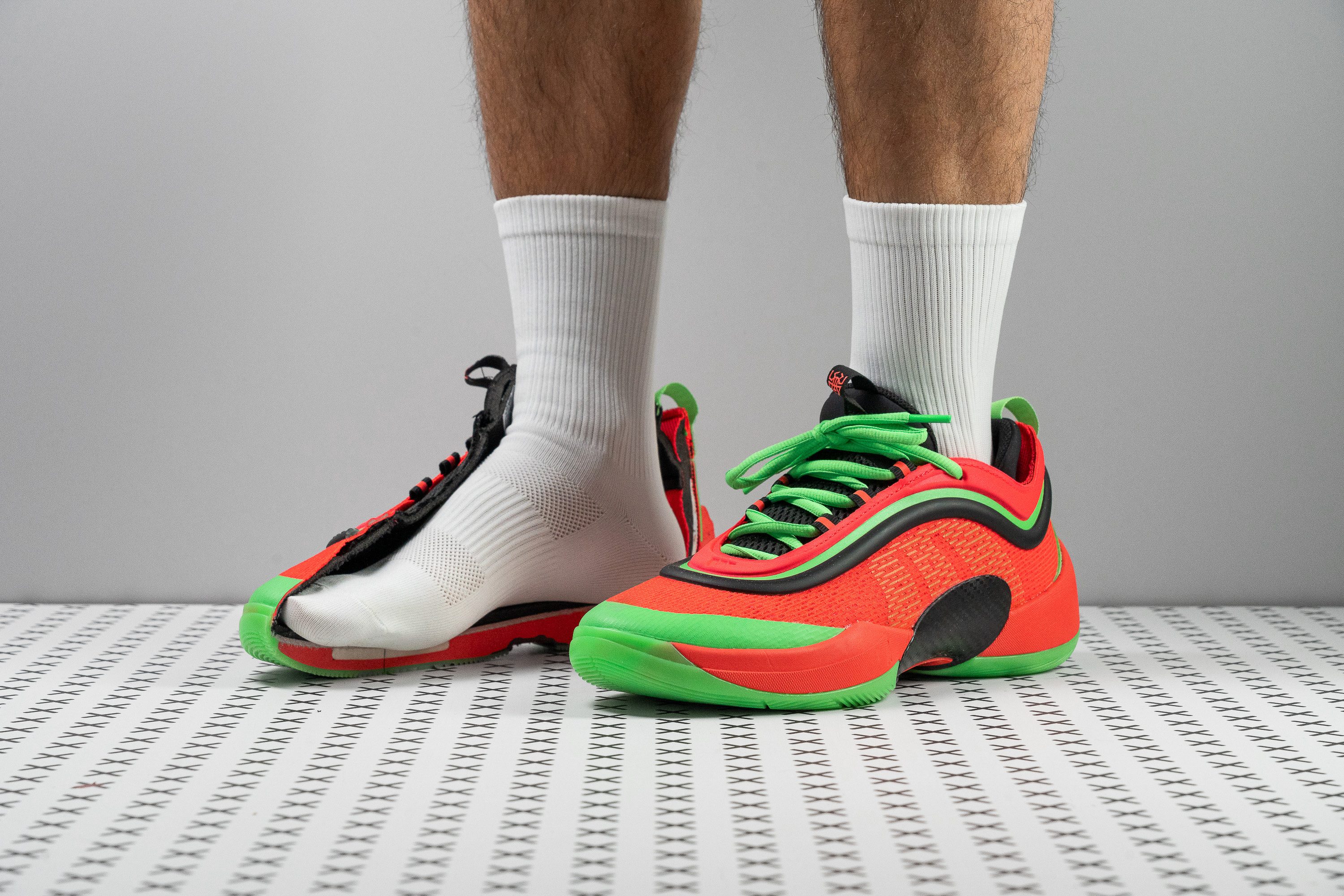
- Lateral support: For quick cuts and direction changes
- Ankle protection: High-tops or advanced lockdown systems
- Court traction: Herringbone or specialized patterns for grip
- Impact cushioning: For jumping and landing protection
The Air Jordan line remains iconic, but modern performers like the Nike LeBron series or Adidas Dame line offer incredible technology for serious players.
6. Tennis Shoes
Tennis demands specific performance features that I test rigorously:
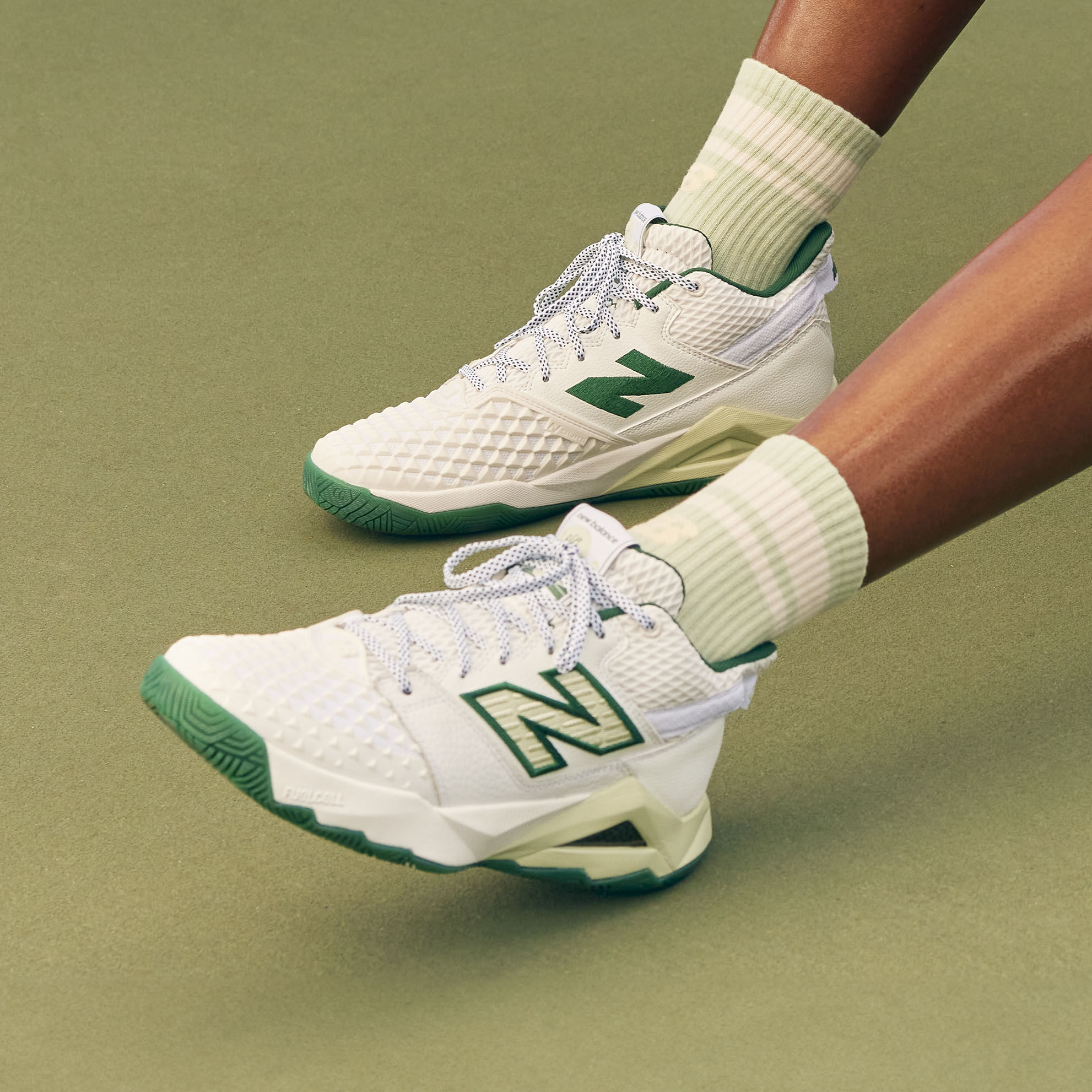
- Lateral stability: For side-to-side court coverage
- Toe durability: Reinforced areas for drag during serves
- Court-specific outsoles: Different compounds for hard court vs clay
- Lightweight agility: Quick footwork without bulk
7. Cross-Training Shoes
The Swiss Army knife of athletic footwear. I use these for gym sessions, HIIT workouts, and general fitness:
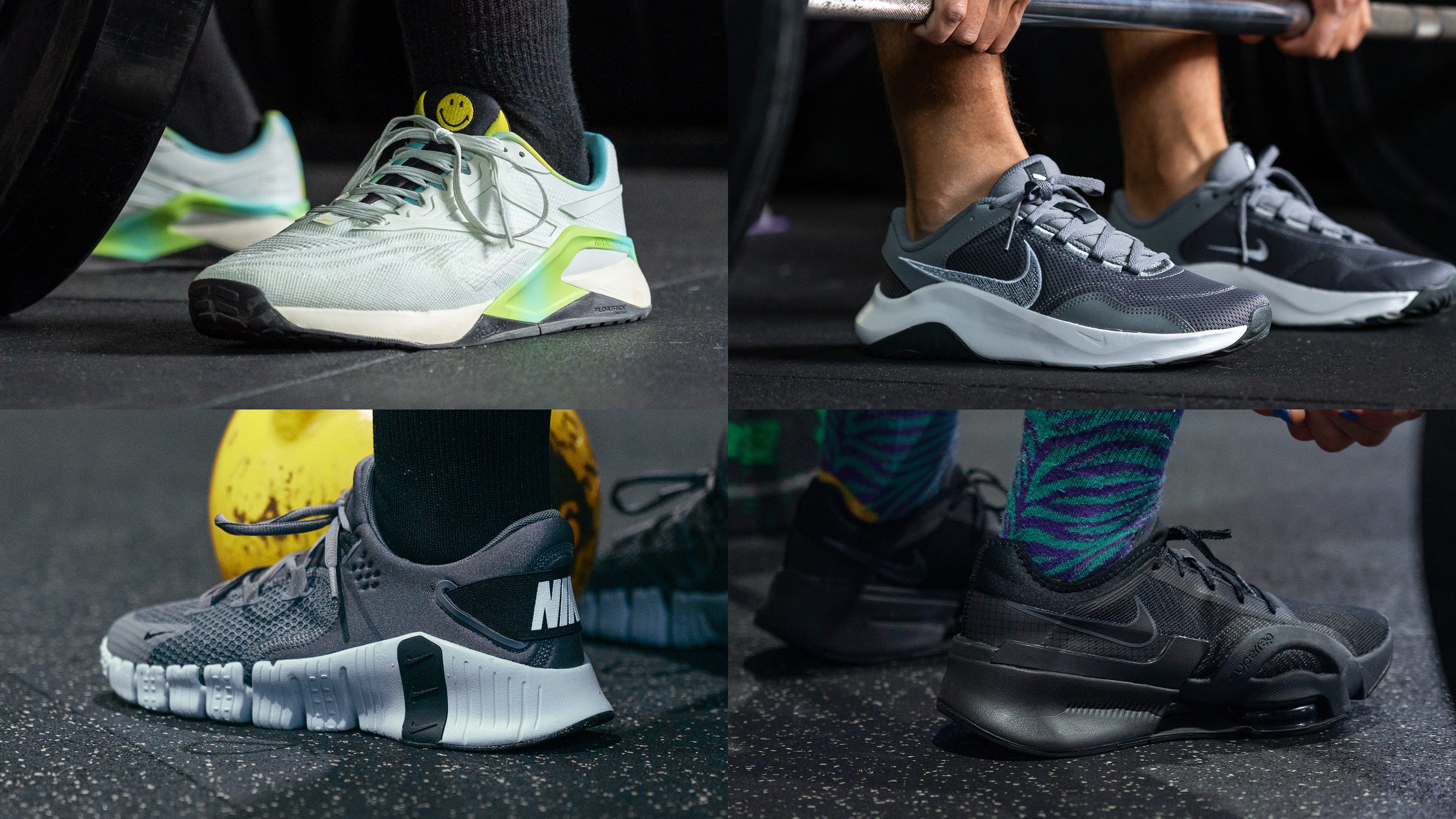
- Multi-directional support: Handles lateral, forward, and rotational movements
- Stable platform: Flat sole for weightlifting
- Versatile traction: Works on various gym surfaces
- Durable construction: Withstands diverse workout demands
Reebok’s Nano series and Nike’s Metcon line are CrossFit staples for good reason.
LIFESTYLE & FASHION SNEAKERS
8. Court Sneakers (Tennis-Inspired)
These are the backbone of any sneaker rotation. Inspired by classic tennis shoes but designed for street wear:

- Clean, minimal design: Timeless aesthetic that doesn’t date
- Versatile colorways: Usually white, black, or neutral tones
- Premium materials: Leather or high-quality synthetic uppers
- Comfortable all-day wear: Cushioned insoles and supportive construction
The Adidas Stan Smith is the gold standard here – it’s been setting the template since 1973 and still looks fresh today. Common Projects elevated this category to luxury status with their Achilles Low.
9. High-Top Sneakers
High-tops offer distinctive style and ankle coverage. I love how they change an outfit’s proportions:
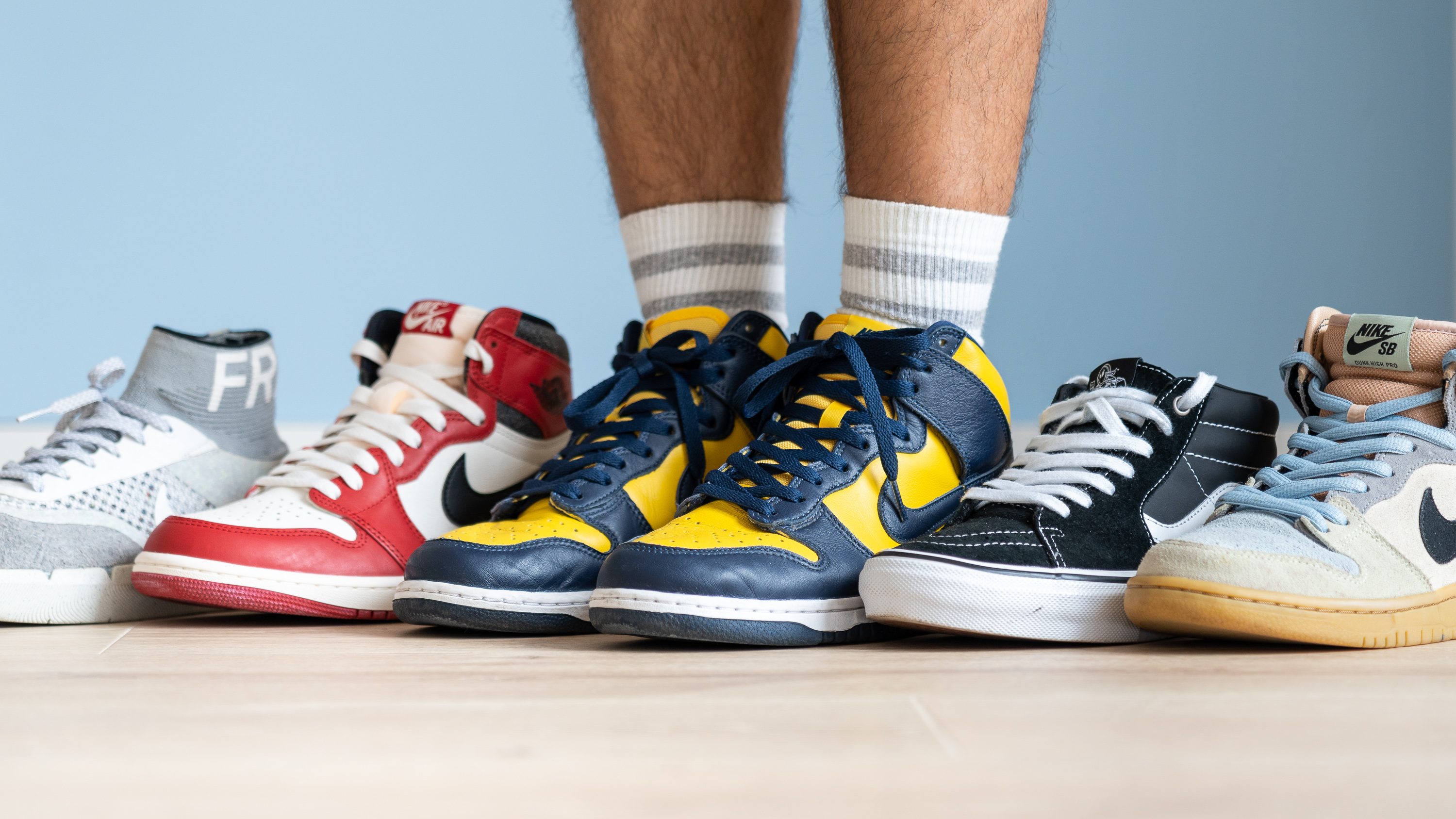
- Extended collar: Covers above the ankle for support and style
- Statement silhouette: More visual impact than low-tops
- Cultural significance: Deep roots in basketball and streetwear
- Versatile styling: Works with cropped pants, jeans, or shorts
Converse Chuck Taylor All Stars remain the OG, while Air Jordan 1s dominate the premium space. For modern takes, check out Nike Blazers or Common Projects’ high-top offerings.
10. Slip-On Sneakers
The ultimate convenience shoe. Perfect for travel, quick errands, or when you just can’t be bothered with laces:

- Laceless design: Elastic goring or stretchy materials for easy on/off
- Minimalist aesthetic: Clean lines without lacing systems
- Comfort focus: Padded insoles and soft materials
- Casual versatility: Works with shorts, jeans, or casual pants
Vans popularized this style with their Classic Slip-On, but luxury brands like Common Projects have elevated it to new heights.
11. Platform Sneakers
Platform sneakers add height and attitude to any outfit:

- Elevated sole: Extra height without compromising comfort
- Bold silhouette: Makes a statement in any outfit
- Trend-focused: Popular in streetwear and fashion circles
- Confidence boost: Literal and figurative elevation
Converse Chuck 70 Platforms and PUMA’s platform offerings dominate this space.
12. Canvas Sneakers
The original casual sneaker. Canvas offers breathability and casual appeal:
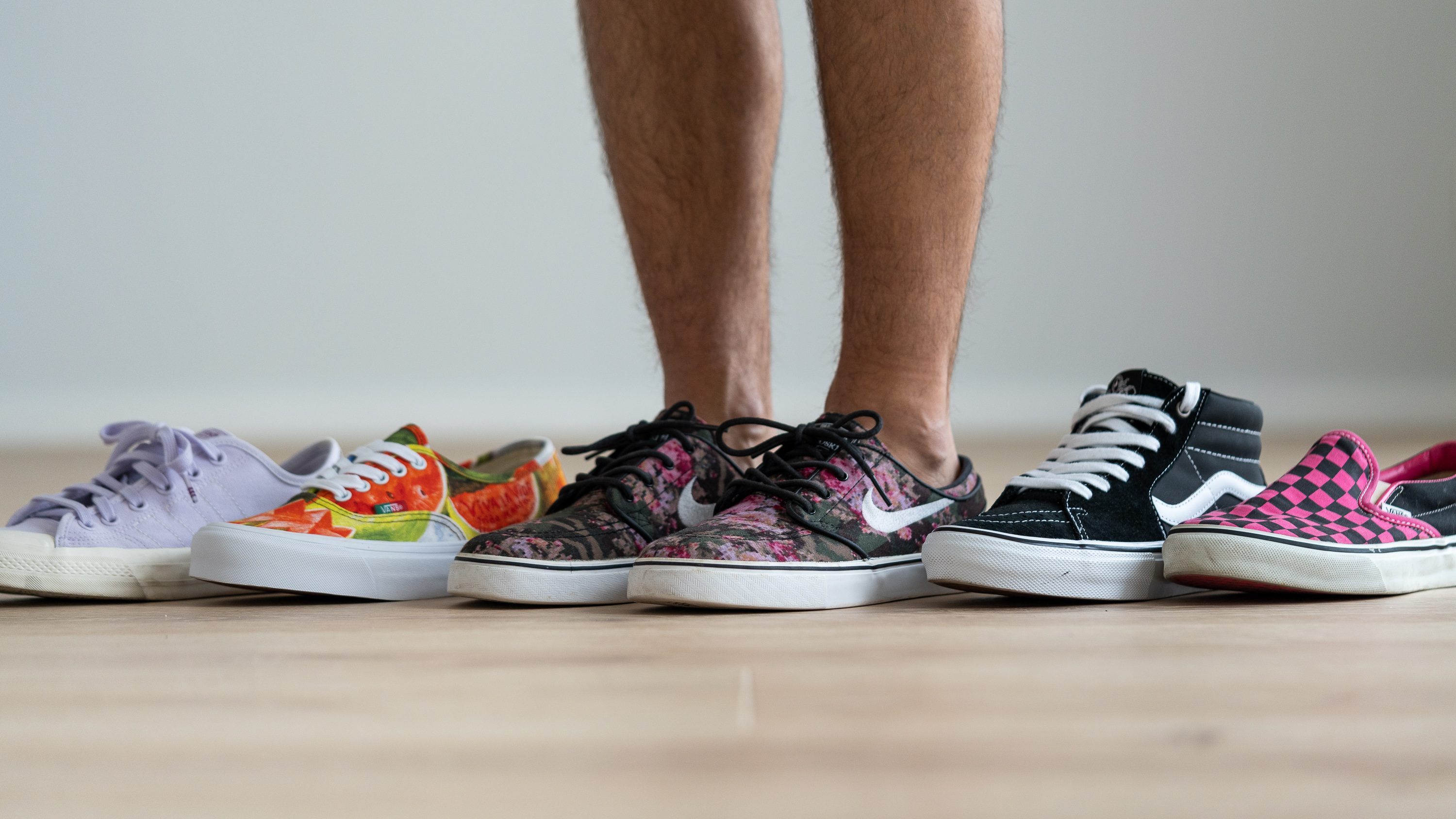
- Breathable fabric upper: Cotton canvas allows airflow
- Lightweight construction: Minimal weight for all-day comfort
- Customizable: Takes dye well, popular for custom designs
- Affordable: Generally lower price point than leather alternatives
Converse and Vans built their empires on canvas sneakers, and for good reason – they’re versatile, comfortable, and timeless.
13. Leather Sneakers
For elevated casual wear, leather sneakers bridge the gap between athletic and dress shoes:
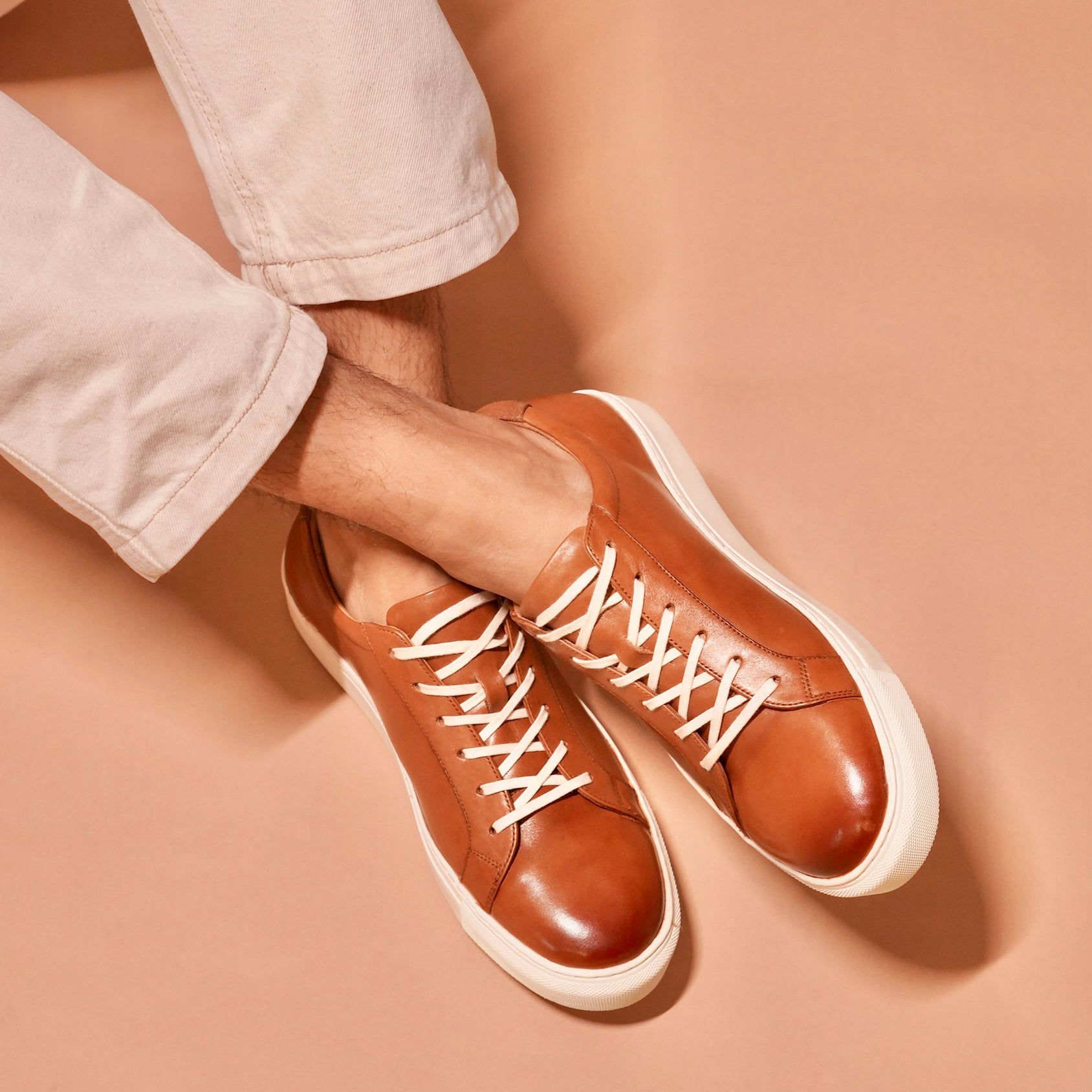
- Premium materials: Full-grain leather uppers age beautifully
- Sophisticated appeal: Works with business casual or smart casual
- Durability: Leather construction lasts longer than fabric alternatives
- Easy maintenance: Can be cleaned and conditioned like dress shoes
Italian and Spanish leathers are top-tier for their supple texture and durability.
14. White Sneakers
The most versatile sneaker color – every rotation needs at least one pair:

- Universal pairing: Works with virtually any outfit
- Clean aesthetic: Fresh, minimalist appeal
- Timeless style: Never goes out of fashion
- Wardrobe staple: Foundation piece for casual wear
From Nike Cortez to Adidas Superstar, white sneakers are non-negotiable wardrobe essentials.
15. Retro/Vintage Sneakers
:max_bytes(150000):strip_icc()/tl-retro-sneaker-trend-tout-25b987fdfc034f488888123ed398b350.jpg)
Nostalgia-driven designs that blend past and present:
- Heritage silhouettes: Classic designs from the 70s-90s
- Premium materials: Often upgraded from original versions
- Cultural significance: Connected to specific eras or movements
- Collector appeal: Limited releases and special editions
New Balance 990 series, Nike Daybreak, and Saucony Jazz exemplify this category perfectly.
16. Dad Shoes/Chunky Sneakers
The “ugly” sneaker trend that became mainstream fashion:
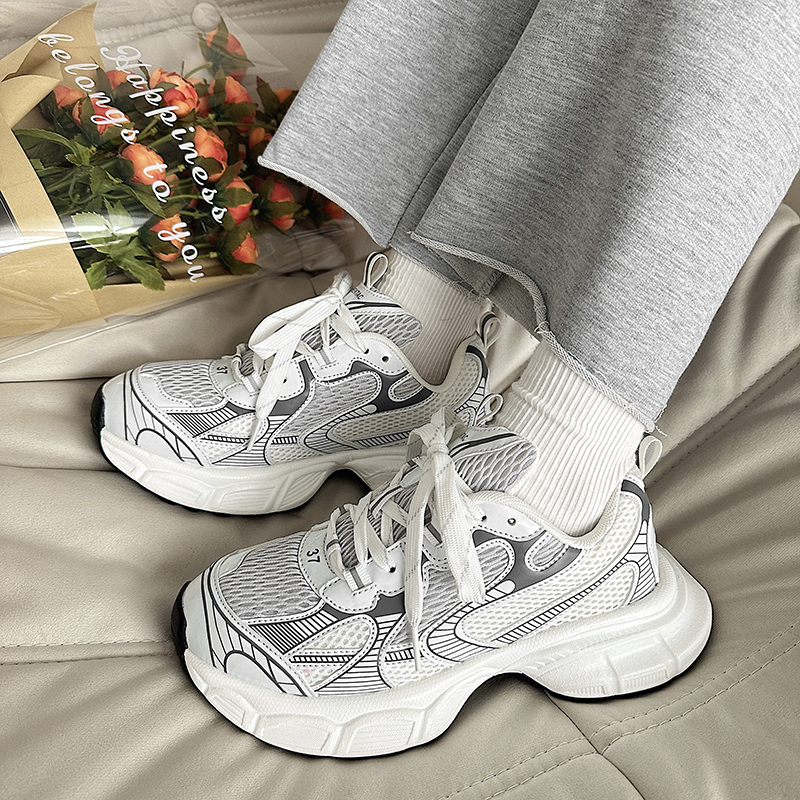
- Oversized proportions: Exaggerated soles and bulky silhouettes
- Normcore appeal: Deliberately average, anti-fashion aesthetic
- Comfort focus: Maximum cushioning and support
- Ironic fashion: Deliberately unstylish becomes stylish
New Balance 990 series leads this trend, but Balenciaga Triple S brought it to luxury fashion.
17. Minimalist/Smart Sneakers
The most sophisticated sneaker category:
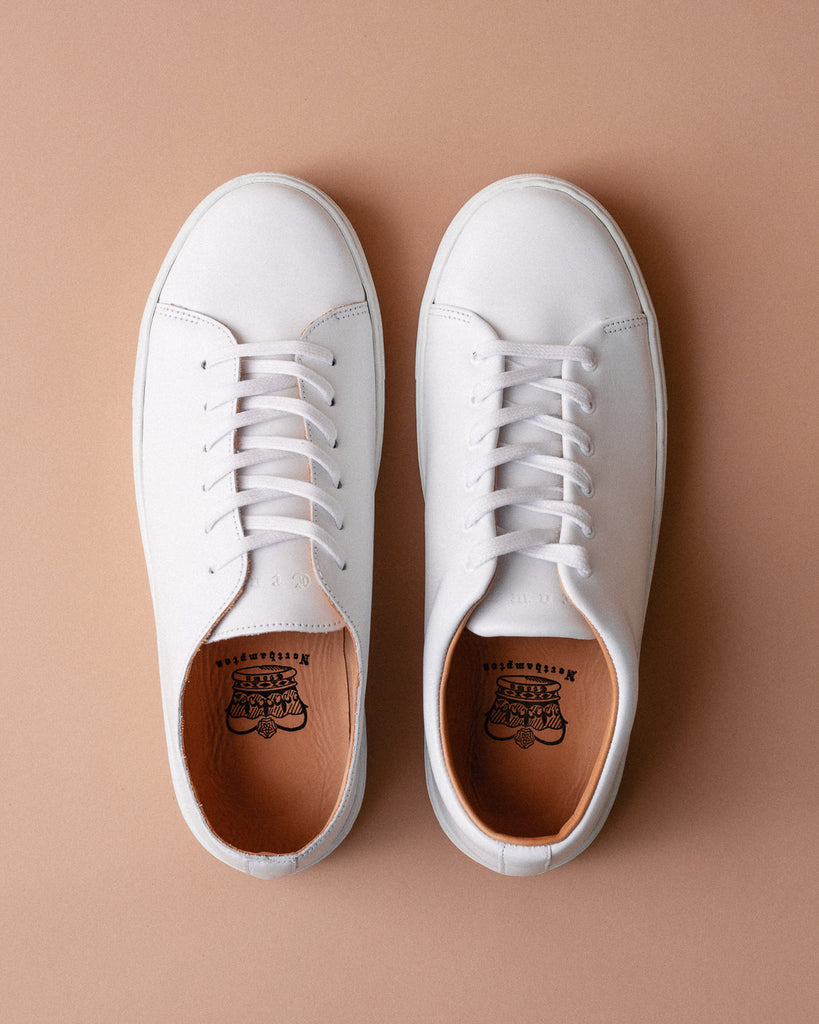
- Clean lines: Minimal branding and design elements
- Premium materials: Italian leather, expert craftsmanship
- Versatile styling: Works with tailoring and smart casual
- Investment pieces: Higher price point but exceptional quality
Common Projects revolutionized this space, making sneakers acceptable with suits for the first time.
Materials Science: What Makes Great Sneakers
Upper Materials Deep Dive
Leather: The Premium Choice
After testing dozens of leather sneakers, I can tell you that not all leather is created equal:
- Full-grain leather: The highest quality, ages beautifully with character
- Top-grain leather: Slightly processed but still excellent
- Nubuck: Sanded full-grain with velvety texture
- Suede: Soft, textured finish that takes dye exceptionally well
Italian and Spanish leathers are renowned for their butter-soft texture and superior durability. During my testing, I’ve found that quality leather sneakers actually improve with age – developing a patina that synthetic materials simply can’t match.
Performance Mesh Technologies
Modern athletic sneakers rely on advanced textile technologies:
- Nike Flyknit: Precisely engineered yarn placement for targeted support
- Adidas Primeknit: Seamless construction for sock-like fit
- Engineered mesh: Strategic ventilation and support zones
- 3D knit uppers: Computer-controlled patterns for optimal performance
These materials excel at moisture management during intense sessions – I’ve tested them through everything from desert runs to humid gym sessions.
Sustainable and Eco-Friendly Materials
The future of sneakers is increasingly sustainable:
- Recycled ocean plastics: Nike and Adidas leading the charge
- Organic cotton: Veja’s signature sustainable canvas
- Vegan leather alternatives: Plant-based materials mimicking leather properties
- Recyclable components: Designed for end-of-life processing
Veja has built their entire brand identity around sustainability, proving that eco-friendly doesn’t mean compromising on style or quality.
Midsole Technology Revolution
Cushioning Systems
This is where the real innovation happens:
- Nike Zoom Air: Pressurized air chambers for responsive cushioning
- Adidas Boost: Thermoplastic polyurethane foam for energy return
- New Balance Fresh Foam: Computer-optimized foam geometry
- On CloudTec: Hollow pods for soft landings and firm takeoffs
- Hoka max cushioning: Oversized midsoles for impact absorption
Performance Innovations
- Carbon fiber plates: Nike’s Vaporfly technology for energy return
- TPU stability frames: Structured support for overpronation
- Gel inserts: ASICS’ signature impact absorption
- Foam density gradients: Varying firmness for optimal foot mechanics
Outsole Engineering
Traction Patterns
The connection between you and the ground is absolutely critical:
- Herringbone: Classic basketball pattern for multi-directional grip
- Contagrip: Salomon’s specialized outdoor compound
- Vibram: Italian-made soles trusted by serious hikers
- Continental rubber: Adidas partnership with tire technology
Durability Considerations
- Rubber compounds: Harder for durability, softer for grip
- Wear patterns: High-wear areas get reinforced materials
- Flexibility grooves: Strategic cuts for natural foot movement
- Thickness variations: More material where you need protection
The Five Major Sneaker Categories (MR PORTER Classification)
1. The Retro Sneaker
Built with specific purposes that have stood the test of time. The Adidas Samba, introduced in 1949 for frozen football training grounds, still sets style templates 75+ years later. What unifies these timeless styles is simplicity where form follows function.
Key characteristics:
- Purposeful origins: Each design solved a specific sporting need
- Timeless silhouettes: Clean lines that don’t date
- Premium materials: Upgraded versions of classic designs
- Cultural significance: Connected to specific sports or eras
Modern designers from Maison Margiela to TOM FORD have created their own interpretations, proving these silhouettes work across price points.
2. The Hype Sneaker
The sneaker market has exploded over the past decade – projections point to 4.7% annual growth through 2030, with the US market approaching $100 billion. Designer collaborations and limited drops drive this frenzy.
Characteristics of hype sneakers:
- Limited availability: Scarcity drives desirability
- Designer collaborations: High fashion meets streetwear
- Bold aesthetics: “More is more” design philosophy
- Resale value: Often worth more than retail price
Balenciaga under Demna has mastered this space, creating zeitgeist-defining releases that push sneaker boundaries. Wales Bonner’s Adidas collaborations have made the Samba ubiquitous again.
3. The Tech Sneaker
The rise of outdoor pursuits has paralleled Gorpcore as a menswear trend. Chunky shoes designed for off-road running are becoming commonplace on city streets.
Technical features:
- GORE-TEX integration: Weather protection
- Pronounced soles: Stability and grip on varied surfaces
- Advanced cushioning: Comfort for extended wear
- Mesh and TPU construction: Durability and breathability
Salomon XT-6s have become the unofficial shoe of creative directors – more likely shuffling across design studios than scree slopes, but capable of both.
4. The Performance Sneaker
Technical advancement has always driven performance footwear, but bleeding-edge athletic shoes are reaching fashion faster than ever.
Performance innovations:
- On CloudTec: Pioneered cushioning systems for spring and response
- Nike ZoomX: Ultra-lightweight foam for competitive racing
- Adidas 4D: 3D-printed midsoles tailored to individual foot data
- Carbon fiber plates: Energy return technology from professional racing
LOEWE’s collaborations with On prove that performance architecture can be fashion-forward.
5. The Court Sneaker
Originally designed for tennis but adopted for their sleek, elegant profile that pairs with both casual and dressy looks.
Court sneaker DNA:
- Low-profile silhouette: Clean, streamlined appearance
- Minimal branding: Subtle design elements
- Premium materials: Leather uppers for sophistication
- Versatile styling: Works across dress codes
The Stan Smith paved the way for brands like Common Projects, SAINT LAURENT, and TOM FORD to reinterpret this classic template.
Expert Buying Strategy: The Mike Method
Step 1: Define Your Purpose Matrix
I always start with a clear purpose assessment:
| Primary Use | Recommended Category | Key Features |
|---|---|---|
| Daily commuting/office | Court sneakers or minimalist | Professional appearance, all-day comfort |
| Running/fitness | Performance athletic | Sport-specific features, durability |
| Weekend casual | Canvas, retro, or slip-ons | Versatility, easy styling |
| Travel | Slip-ons or walking shoes | Convenience, comfort, packability |
| Fashion statement | High-tops, platforms, designer | Unique design, trend relevance |
Step 2: Foot Type Analysis
Understanding your biomechanics is absolutely crucial:
Normal Arch (Most Common)
- Foot pattern: Even wear across heel and forefoot
- Recommendations: Neutral cushioning, most shoes work well
- Avoid: Extreme motion control or minimalist shoes
High Arch (Supination)
- Foot pattern: Wear on outer edges
- Recommendations: Extra cushioning, flexible shoes
- Avoid: Rigid motion control features
Flat Feet (Overpronation)
- Foot pattern: Wear on inner edges
- Recommendations: Motion control, stability features
- Avoid: Minimalist or neutral shoes
Step 3: The Perfect Fit Protocol
My 5-point fitting system after testing hundreds of shoes:
- Thumb’s width test: Space between longest toe and shoe end
- Heel lockdown check: No slipping during walking motion
- Width assessment: No pinching or excess looseness
- Arch support evaluation: Supportive without being intrusive
- Dynamic walk test: Comfort during actual movement
Professional Fitting Tips
- Afternoon fitting: Feet are naturally larger later in the day
- Appropriate socks: Wear what you’ll actually use
- Both feet measured: Most people have slight size differences
- Brand variation: Sizes differ between manufacturers
Step 4: Budget Allocation Strategy
Investment Priorities
Splurge categories (where quality matters most):
- Daily drivers: Your most-worn pairs deserve premium construction
- Performance shoes: Technical features justify higher prices
- Leather sneakers: Quality materials age better and last longer
- Professional wear: Investment in appearance pays dividends
Save categories (where budget options work fine):
- Trend pieces: Fashion sneakers you might tire of quickly
- Occasional wear: Shoes for specific, infrequent activities
- Experimental styles: Testing new categories before committing
Price-to-Value Sweet Spots
| Price Range | What You Get | Best Categories |
|---|---|---|
| $50-100 | Basic materials, good construction | Canvas, basic athletic, everyday beaters |
| $100-200 | Premium materials, advanced features | Performance running, quality leather |
| $200-400 | Luxury materials, innovative tech | Designer collabs, premium leather |
| $400+ | Artisanal quality, exclusive designs | Luxury brands, limited releases |
The Essential Sneaker Rotation: Building Your Collection
The Core Four (Non-Negotiable Foundation)
1. White Leather Court Sneaker
Your most versatile pair – works with 90% of casual outfits:
- Recommended models: Adidas Stan Smith, Common Projects Achilles, Nike Court Vision
- Styling range: Jeans to chinos to smart casual
- Investment level: Worth spending more for quality leather
2. Performance Athletic Shoe
Choose based on your primary physical activity:
- For runners: Nike Pegasus, Brooks Ghost, ASICS Gel-Nimbus
- For gym-goers: Nike Metcon, Reebok Nano, New Balance Minimus
- For general fitness: Adidas Ultraboost, On Cloud, Allbirds Tree Runners
3. Canvas or Fabric Casual
Relaxed weekend warrior for low-key occasions:
- Classic options: Converse Chuck Taylor, Vans Old Skool, Keds Champion
- Modern alternatives: Veja V-10, Superga 2750, PF Flyers Center Hi
- Style benefits: Adds texture variety, extremely versatile
4. Statement/Personality Shoe
This is your expression piece – have fun with it:
- High-top options: Air Jordan 1, Nike Blazer, Converse 70s Hi
- Retro runners: New Balance 990, Nike Daybreak, Saucony Jazz
- Designer pieces: Maison Margiela GATs, Balenciaga Triple S, Golden Goose
The Advanced Collection (6-8 Pairs)
5. Slip-On Convenience Pair
- Travel essential: Easy airport security, hotel room comfort
- Top picks: Vans Classic Slip-On, Allbirds Tree Loungers, Common Projects Slip-On
6. Weather-Appropriate Option
- Waterproof choice: Adidas Terrex, Salomon X Ultra, Vans MTE
- Seasonal consideration: Your climate determines necessity
7. Dress Sneaker
- Business casual bridge: Professional enough for office casual
- Luxury options: Common Projects, Uniform Standard, ETQ Amsterdam
8. Experimental/Trend Piece
- Fashion forward: Platform, chunky, or avant-garde designs
- Budget-friendly approach: Don’t overspend on trends
Styling Mastery: Making Sneakers Work
The High-Low Balance
One of my favorite styling principles is mixing formality levels:
- Premium sneakers + elevated basics: Leather sneakers with wool trousers and merino sweater
- Casual sneakers + structured pieces: Canvas sneakers with tailored blazer and jeans
- Athletic sneakers + luxury accessories: Running shoes with high-end streetwear
Proportion Principles
Balancing Silhouettes
- Chunky shoes + slim pants: Prevents overwhelming proportions
- Sleek sneakers + wider cuts: Creates balanced visual weight
- High-tops + cropped pants: Shows off the shoe’s full silhouette
- Low-tops + longer pants: Clean, streamlined appearance
Color Coordination Strategies
Monochromatic approach:
- All-white outfit with white sneakers for clean minimalism
- Tonal grays for sophisticated urban aesthetic
- Black-on-black for sleek, modern look
Accent color method:
- Neutral outfit with one colorful sneaker element
- Match sneaker accent to another piece (watch, bag, etc.)
- Use sneaker color to add personality to muted palette
Complementary contrast:
- Navy outfit with white sneakers for classic contrast
- Earth tones with cream or off-white shoes
- Dark colors with metallic or light-colored sneakers
Dress Code Navigation
Business Casual
- Safe choices: Minimalist leather sneakers in white, black, or navy
- Pairing suggestions: Chinos, button-down shirts, blazers
- Avoid: Athletic-looking shoes, bright colors, bold branding
Smart Casual
- Expanded options: Court sneakers, premium canvas, suede options
- Styling freedom: Jeans, polo shirts, casual blazers
- Color flexibility: Muted tones and classic colorways work best
Casual/Weekend
- Full freedom: Any sneaker style works
- Expression opportunity: Bold colors, patterns, statement pieces
- Comfort priority: Choose based on planned activities
Care and Maintenance: Protecting Your Investment
Daily Maintenance Protocols
The 24-Hour Rule
Never wear the same sneakers on consecutive days. Shoes need 24 hours to completely dry out and return to their original shape. This single habit will double your sneakers’ lifespan.
Immediate Care Steps
- Post-wear inspection: Check for new scuffs or damage
- Quick cleaning: Wipe away surface dirt before it sets
- Proper storage: Keep in cool, dry place away from direct sunlight
- Cedar shoe trees: Especially important for leather sneakers
Material-Specific Care
Leather Sneaker Maintenance
Weekly routine:
- Remove laces and insoles if possible
- Brush away surface dirt with soft-bristled brush
- Apply appropriate leather cleaner
- Condition leather monthly to prevent cracking
- Polish if desired for extra shine
Suede Sneaker Care
Special considerations:
- Suede brush: Use brass or stiff bristles to restore nap
- Suede protector spray: Apply before first wear and monthly thereafter
- Stain removal: Use suede eraser for minor marks
- Water damage: Let dry completely, then brush vigorously
Canvas and Fabric Care
- Machine washing: Some canvas sneakers are machine washable (check label)
- Hand cleaning: Mild soap and water for stubborn stains
- Air drying: Never use direct heat or sunlight
- Odor prevention: Antimicrobial insoles or regular rotation
Performance/Technical Materials
- Immediate cleaning: Technical materials show dirt more easily
- Gentle detergents: Harsh chemicals can damage synthetic materials
- Mesh care: Use soft brush to clean without damaging fibers
- Waterproof treatment: Reapply annually for outdoor shoes
Storage Solutions
Short-term Storage
- Shoe rack: Allows air circulation around shoes
- Cubby system: Individual compartments prevent scuffing
- Rotation visibility: See all options to encourage even wear
Long-term Storage
- Original boxes: Provide protection and stack efficiently
- Clear containers: Visibility with protection from dust
- Climate control: Avoid basements, attics, or humid areas
- Tissue stuffing: Maintain shape during extended storage
Current Trends and Future Directions
Sustainability Revolution
The sneaker industry is undergoing a fundamental shift toward sustainability:
- Circular design: Shoes designed for recycling at end-of-life
- Bio-based materials: Algae foams, mushroom leather, lab-grown materials
- Carbon-neutral production: Brands offsetting manufacturing emissions
- Transparency initiatives: Supply chain visibility for conscious consumers
Brands leading this movement include Veja, Allbirds, and Adidas with their Futurecraft line.
Technology Integration
Smart Sneakers
- Performance tracking: Built-in sensors for athletic metrics
- Adaptive fit: Self-lacing technology from Nike Adapt series
- Temperature regulation: Heating/cooling systems for climate control
- Gait analysis: Real-time feedback for injury prevention
Manufacturing Innovation
- 3D printing: Customized midsoles based on individual foot scans
- On-demand production: Reducing waste through made-to-order systems
- Robotic assembly: Precision manufacturing for consistent quality
- Local production: Reducing shipping through regional manufacturing
Style Evolution
Current Dominant Trends
- Gorpcore continuation: Outdoor-inspired designs for urban wear
- Y2K revival: Chunky, technical aesthetics from early 2000s
- Minimalist luxury: Clean, premium sneakers for elevated casual
- Heritage appreciation: Vintage silhouettes with modern updates
Emerging Directions
- Gender-neutral design: Unisex sizing and styling approaches
- Modular construction: Swappable components for customization
- Artisanal details: Hand-crafted elements in mass-produced shoes
- Cultural collaboration: Region-specific designs celebrating local heritage
Brand Deep Dive: The Sneaker Ecosystem
Heritage Athletic Brands
Nike
- Strengths: Innovation, marketing, athlete endorsements
- Iconic models: Air Jordan 1, Air Force 1, Dunk, Cortez
- Technology focus: Zoom Air, React foam, Flyknit uppers
- Market position: Premium performance and lifestyle
Adidas
- Strengths: European heritage, soccer dominance, Boost technology
- Iconic models: Stan Smith, Superstar, Gazelle, Ultra Boost
- Innovation areas: Primeknit, 4D printing, sustainable materials
- Cultural influence: Strong in music and fashion collaborations
New Balance
- Strengths: American manufacturing, technical expertise, width options
- Iconic models: 990 series, 1500, 574, Fresh Foam line
- Technology focus: Fresh Foam, FuelCell, stability systems
- Market position: Premium quality, “dad shoe” trend leader
Lifestyle and Fashion Brands
Converse
- Heritage: Basketball roots, counter-culture adoption
- Iconic models: Chuck Taylor All Star, One Star, Pro Leather
- Strengths: Timeless design, cultural relevance, customization
- Evolution: Modern materials in classic silhouettes
Vans
- Origin story: Skateboarding culture, California lifestyle
- Iconic models: Old Skool, Authentic, Slip-On, Sk8-Hi
- Strengths: Authenticity, youth culture connection, durability
- Innovation: Pro models with enhanced performance features
Luxury and Premium Segment
Common Projects
- Revolution: Made sneakers acceptable with formal wear
- Design philosophy: Minimalism, premium materials, clean lines
- Signature elements: Gold serial numbers, Italian craftsmanship
- Impact: Influenced entire luxury sneaker category
Maison Margiela
- Approach: Deconstructed aesthetics, avant-garde design
- Signature model: GAT (German Army Trainer) interpretation
- Philosophy: Anti-fashion fashion, conceptual design
- Influence: Designer sneaker credibility
Emerging and Sustainable Brands
Veja
- Mission: Transparency, sustainability, fair trade
- Materials: Organic cotton, wild rubber, recycled plastic
- Growth: From niche eco-brand to mainstream acceptance
- Proof point: Style doesn’t require environmental compromise
Allbirds
- Innovation: Merino wool sneakers, eucalyptus tree fiber
- Philosophy: Comfort, simplicity, carbon neutrality
- Market impact: Challenged traditional materials thinking
- Evolution: From startup to publicly-traded company
Global Sneaker Culture
Regional Preferences and Trends
North American Market
- Dominant categories: Athletic performance, basketball heritage
- Cultural drivers: Sports endorsements, hip-hop influence
- Price sensitivity: Wide range from budget to luxury
- Seasonal patterns: Back-to-school drives, holiday releases
European Preferences
- Style focus: Soccer heritage, minimalist design
- Brand loyalty: Strong preference for European brands
- Sustainability emphasis: Environmental concerns drive purchasing
- Fashion integration: Sneakers as part of overall style system
Asian Market Dynamics
- Manufacturing hub: 90% of global production
- Design influence: Technical innovation, future-forward aesthetics
- Limited releases: Exclusive drops and collaboration culture
- Brand collaborations: Local designers with global brands
Sneakerhead Subculture
Collecting Philosophy
- Rarity value: Limited releases command premium prices
- Historical significance: Original colorways and retro releases
- Condition obsession: Deadstock (unworn) pairs most valuable
- Authentication importance: Counterfeit concerns drive verification services
Resale Market Economics
- Market size: Expected to reach $30 billion by 2030
- Platform evolution: StockX, GOAT, Stadium Goods legitimizing secondary market
- Price drivers: Celebrity endorsements, limited availability, cultural moments
- Investment potential: Some shoes appreciating faster than traditional investments
Frequently Asked Questions: Expert Answers
Sizing and Fit
Q: How should sneakers fit compared to dress shoes?
A: Sneakers should have about a thumb’s width (half inch) of space between your longest toe and the shoe’s end. This is slightly more room than dress shoes because sneakers are designed for movement and your feet swell during activity. The heel should fit snugly without slipping, and the width should be comfortable without pinching.
Q: Do different brands fit differently?
A: Absolutely! In my testing experience, Nike tends to run narrow, New Balance offers various width options, and European brands like Adidas often fit slightly larger. Always try shoes on if possible, and when shopping online, check the brand’s specific sizing guide and return policy.
Q: Should I size up for athletic performance?
A: For running shoes, yes – go up half a size to account for foot swelling during exercise. For basketball or tennis, stick to your true size for better court control. For casual wear, true to size typically works best.
Performance and Durability
Q: How long should sneakers last?
A: It depends on usage:
- Running shoes: 300-500 miles or 6-8 months of regular use
- Casual sneakers: 1-2 years with proper rotation
- Premium leather: 3-5 years with good care
- Athletic court shoes: One season of serious play
Q: When should I replace my sneakers?
A: Look for these signs:
- Outsole wear exposing midsole material
- Compressed cushioning that doesn’t bounce back
- Upper separation from sole
- Persistent odor that cleaning can’t eliminate
- Uneven wear patterns causing discomfort
Style and Versatility
Q: Can I wear sneakers with a suit?
A: In modern business casual environments, yes – but choose wisely. Stick to minimalist leather sneakers in neutral colors (white, black, navy). Avoid athletic-looking shoes, bright colors, or bold branding. The key is having the sneaker look more like a casual dress shoe.
Q: What’s the most versatile sneaker color?
A: White, hands down. A clean white sneaker works with virtually any casual outfit and can even bridge into smart casual territory. It’s timeless, goes with any color palette, and always looks fresh when well-maintained.
Q: How many pairs of sneakers do I actually need?
A: For a functional rotation, you need:
- One white court sneaker for versatility
- One athletic shoe for your primary activity
- One casual/weekend pair for relaxed wear
- One “statement” pair for personality
This covers 90% of situations. Add more based on specific needs or interests.
Care and Maintenance
Q: Can I put sneakers in the washing machine?
A: Some canvas sneakers can be machine washed (check the label), but I generally recommend against it. Hand cleaning with mild soap and water is safer for most materials. Never machine wash leather, suede, or high-tech performance materials.
Q: How do I prevent sneaker odor?
A: Prevention is key:
- Rotate shoes – never wear the same pair daily
- Use moisture-wicking socks
- Insert cedar shoe trees or antimicrobial insoles
- Let shoes air dry completely between wears
- Apply antifungal powder if needed
Q: Is it worth waterproofing sneakers?
A: For outdoor or technical sneakers, absolutely. For casual leather sneakers, a good protector spray helps with stains and water resistance. Canvas sneakers can benefit from basic protection, but don’t expect miracles – they’re not designed to be waterproof.
Buying Strategy
Q: When is the best time to buy sneakers?
A: For deals:
- End of season: August for summer styles, February for winter
- Black Friday/Cyber Monday: Best discounts of the year
- Back-to-school season: Wide selection and competitive pricing
- Model year transitions: When new versions launch
Q: Should I buy sneakers online or in-store?
A: Both have advantages:
- In-store: Try before buying, expert fitting, immediate gratification
- Online: Better selection, competitive pricing, convenience
My recommendation: Try new brands/styles in-store first, then you can confidently buy online for future purchases.
Q: Are expensive sneakers worth it?
A: It depends on your priorities:
- Worth it for: Daily wear shoes, performance athletics, style investment pieces
- Not worth it for: Trend experiments, occasional wear, purely brand-driven purchases
- Sweet spot: $100-200 range offers best value for quality materials and construction
Final Recommendations: Your Sneaker Action Plan
For the Complete Beginner
Start with these two essential pairs:
- White leather court sneaker: Adidas Stan Smith or Nike Court Vision
- Comfortable athletic shoe: Based on your preferred activity
Master styling these basics before expanding your collection. Focus on fit and comfort over trends.
For the Style Enthusiast
Build a diverse rotation covering different occasions:
- Professional: Minimalist leather sneaker
- Weekend: Canvas or retro runner
- Athletic: Performance shoe for your sport
- Statement: High-top or designer collaboration
- Convenience: Slip-on for travel and errands
For the Performance Athlete
Invest in sport-specific technology:
- Research biomechanics and gait analysis
- Replace shoes based on mileage/usage, not appearance
- Consider multiple pairs for different training types
- Don’t compromise on fit for style
For the Collector/Sneakerhead
Focus on long-term value:
- Research resale values and historical trends
- Invest in proper storage and authentication
- Balance personal taste with investment potential
- Build relationships with reputable retailers
Conclusion: Step Into Your Sneaker Journey
After testing over 500 sneaker models across every category, price point, and use case imaginable, I can confidently say this: the perfect sneaker isn’t about finding the most expensive, the most hyped, or the most technically advanced model. It’s about understanding your specific needs, lifestyle, and preferences, then making informed choices based on real-world performance rather than marketing promises.
The sneaker industry has evolved into something truly remarkable – a fusion of athletic innovation, fashion expression, and cultural significance that touches every aspect of modern life. Whether you’re lacing up for a marathon PR attempt, stepping into a boardroom meeting, or just grabbing coffee on a Saturday morning, there’s a sneaker designed specifically for that moment.
Key Takeaways from This Guide
- Purpose drives choice: Always start with how you’ll actually use the shoes
- Fit is everything: The best-looking shoe is worthless if it doesn’t fit properly
- Quality varies significantly: Understand materials and construction to make smart investments
- Rotation extends life: Never wear the same pair daily
- Style is personal: Trends come and go, but finding your aesthetic lasts
Remember, sneakers are tools first, fashion second. Get the function right – the comfort, the fit, the appropriate technology for your needs – and the style will follow naturally. Don’t get overwhelmed by the sheer number of options available. Start with the basics, understand what works for your lifestyle, and build from there.
The sneaker world is constantly evolving, with new technologies, materials, and designs emerging regularly. Stay curious, be willing to try new things, but always come back to what actually works for your feet and your life. Whether you end up with a simple rotation of three pairs or a collection of thirty, make sure each pair serves a purpose and brings you joy.
Most importantly, remember that the best sneakers are the ones you actually wear. Don’t let perfect be the enemy of good – sometimes the most practical choice is the right choice. Take care of your investment through proper maintenance and storage, and your sneakers will take care of you for years to come.
Now get out there and find your perfect pair. Your feet (and your style) will thank you!
Questions about specific models, need personalized recommendations, or want to share your own sneaker experiences? Drop them in the comments below – I love helping fellow sneaker enthusiasts navigate this incredible world of footwear! 👟
About This Guide
This comprehensive sneaker encyclopedia represents over 10 years of hands-on testing, research, and real-world experience across hundreds of models from dozens of brands. All recommendations are based on actual use and testing, not marketing partnerships or affiliate relationships. Keep stepping forward!

